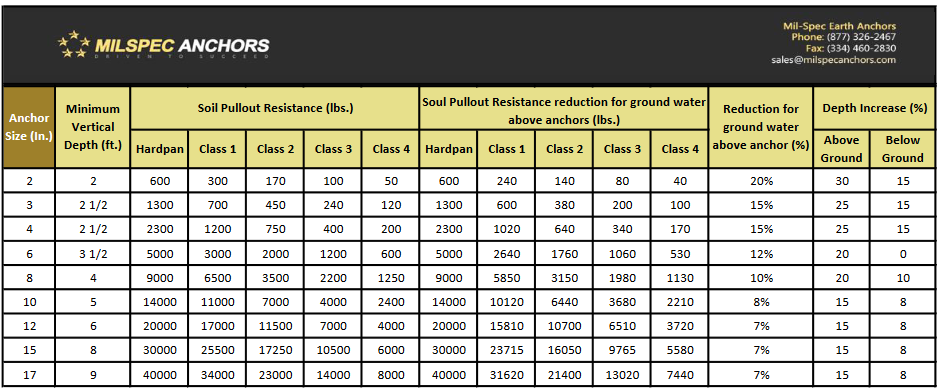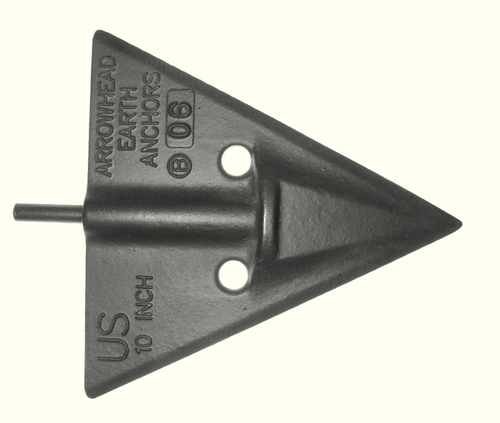Product Description
Pullout Resistance Chart

Notes:
- In determining vertical depth to the Ground Anchor, the thickness of topsoil, peat, soft clay and similar soft soils should not be included.
- The applicable class of soil that is present within a zone from the Ground Anchor to a point from one to three feet above the anchor, depending upon anchor size.
- For Ground Anchors at a minimum depth in Soil Classes 1-4, reduce ultimate pullout resistance by percentage given for each foot ground water table is above the anchor. No reduction is required for hardpan.
- For Ground Anchors driven to depths greater than the minimum Soul Classes 1-4, the ultimate pullout resistance may be increased by the percentage given for each additional foot below the specified minimum. The ultimate pullout resistance
Soil Classification
Hardpan: A very compact heterogeneous mixture of soil particles ranging from those of silt and clay size to sand, gravel and perhaps boulders and generally exhibiting very high dry strength.
Soil Classes 1-4: Cohesion-less sands and gravels which are non-plastic in the wet state and which possess no strength or cohesion between individual mineral particles or rock fragments in the dry state.
Class 1: Dense Gravel: Dense well-graded sand and gravel with angular particles.
Class 2: Medium-dense sandy gravel and gravelly sand; Medium-dense to dense well graded sand.
Class 3: Loose to medium dense well-graded sand; Medium \dense to dense medium to find sand.
Class 4: Loose fine sand and loose medium sand with well-rounded particles: Uncompact sand fill.
Product Videos
Custom Field
Product Reviews
1 Review Hide Reviews Show Reviews
-
arrow head
This is the firsty time I have used this - however I am a engineer having alot of background in casting, alloys and grades of ferric metals.
This should work great.











